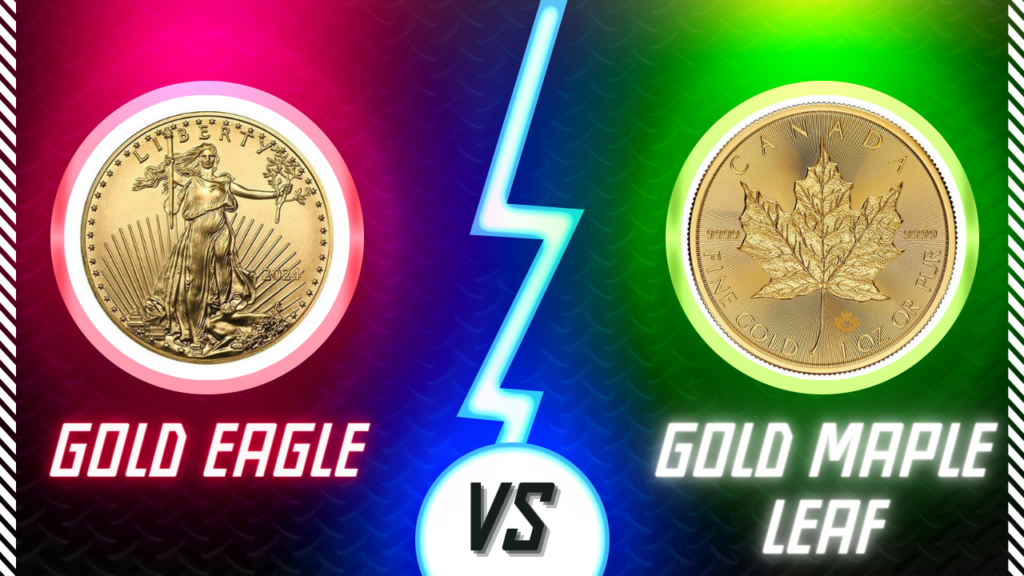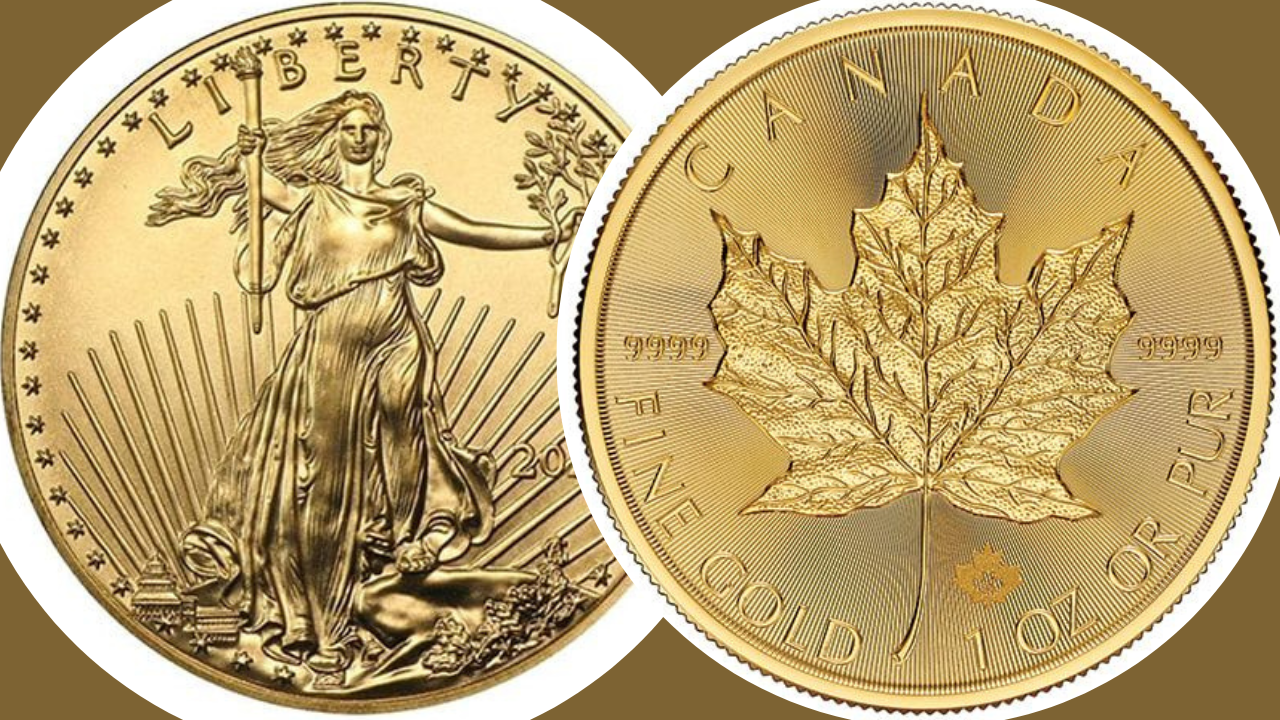
Gold Eagle vs. Gold Maple Leaf: A Comparison of Two Popular Gold Coins
The Gold Eagle and The Gold Maple Leaf are two of the most popular bullion coins in the market. Both coins are made of gold, but they have some differences that make them unique. Investors often face the dilemma of choosing between the two coins when looking to invest in gold coins.

The Gold Eagle is a 22-karat gold coin that is made of 91.67% gold, 3% silver, and 5.33% copper. It was first minted in 1986 by the United States Mint and has been a popular choice for investors ever since. The Gold Eagle comes in four sizes – 1 oz, 1/2 oz, 1/4 oz, and 1/10 oz – making it a versatile investment option for those looking to invest in gold coins.
On the other hand, the Gold Maple Leaf is a 24-karat gold coin that is made of 99.99% pure gold. It was first minted in 1979 by the Royal Canadian Mint and is one of the purest gold coins in the market. The Gold Maple Leaf comes in five sizes – 1 oz, 1/2 oz, 1/4 oz, 1/10 oz, and 1/20 oz – making it a flexible investment option for those looking to invest in gold coins.
Comparative Analysis of Gold Eagle and Gold Maple Leaf

History and Origin
The American Gold Eagle and Canadian Gold Maple Leaf are two of the world’s most popular gold bullion coins. The American Gold Eagle was first minted in 1986 by the United States Mint, while the Canadian Gold Maple Leaf was first introduced in 1979 by the Royal Canadian Mint. Both coins are legal tender and have a face value, but their true value is determined by the market price of gold.
Design and Features
The American Gold Eagle features Lady Liberty on the obverse side, while the reverse side shows a family of eagles. On the other hand, the Canadian Gold Maple Leaf features an image of Queen Elizabeth II on the obverse side and a maple leaf on the reverse side. Both coins have intricate designs and are highly sought after by collectors.
Investment Value and Market Performance
Both coins are considered to be excellent investments due to their high purity and gold content. The American Gold Eagle is made of 22-karat gold, while the Canadian Gold Maple Leaf is made of 24-karat gold. The Canadian Gold Maple Leaf is considered to be the purest gold bullion coin in the world, with a purity of .9999 fine gold. The American Gold Eagle, on the other hand, has a purity of .9167 fine gold.
Physical Characteristics and Sizes
The American Gold Eagle comes in four different sizes: 1 oz, 1/2 oz, 1/4 oz, and 1/10 oz. The Canadian Gold Maple Leaf comes in five different sizes: 1 oz, 1/2 oz, 1/4 oz, 1/10 oz, and 1/20 oz. Both coins have a legal tender value that is significantly lower than their actual market value.
Purchasing and Storage Options
Both coins can be purchased from authorized dealers like Metals Mint and are eligible for inclusion in an Individual Retirement Account (IRA). The American Gold Eagle has a unique security feature called Bullion DNA, which allows for easy authentication of the coin. Both coins can be stored in a secure location, such as a bank vault, a home safe, or a 3rd Party Depository.
Collectibility and Numismatic Value
Both coins are highly collectible and have a significant numismatic value. Limited edition versions of both coins are released periodically, which can significantly increase their value. The American Gold Eagle is more popular among American collectors, while the Canadian Gold Maple Leaf is more popular among international collectors.
In conclusion, both the American Gold Eagle and Canadian Gold Maple Leaf are excellent options for investing in gold bullion coins. The American Gold Eagle is more widely recognized in the United States, while the Canadian Gold Maple Leaf is considered to be the purest gold bullion coin in the world. Ultimately, the choice between the two coins comes down to personal preference and investment strategy.


